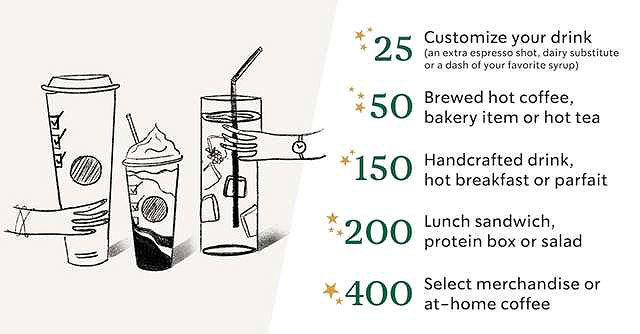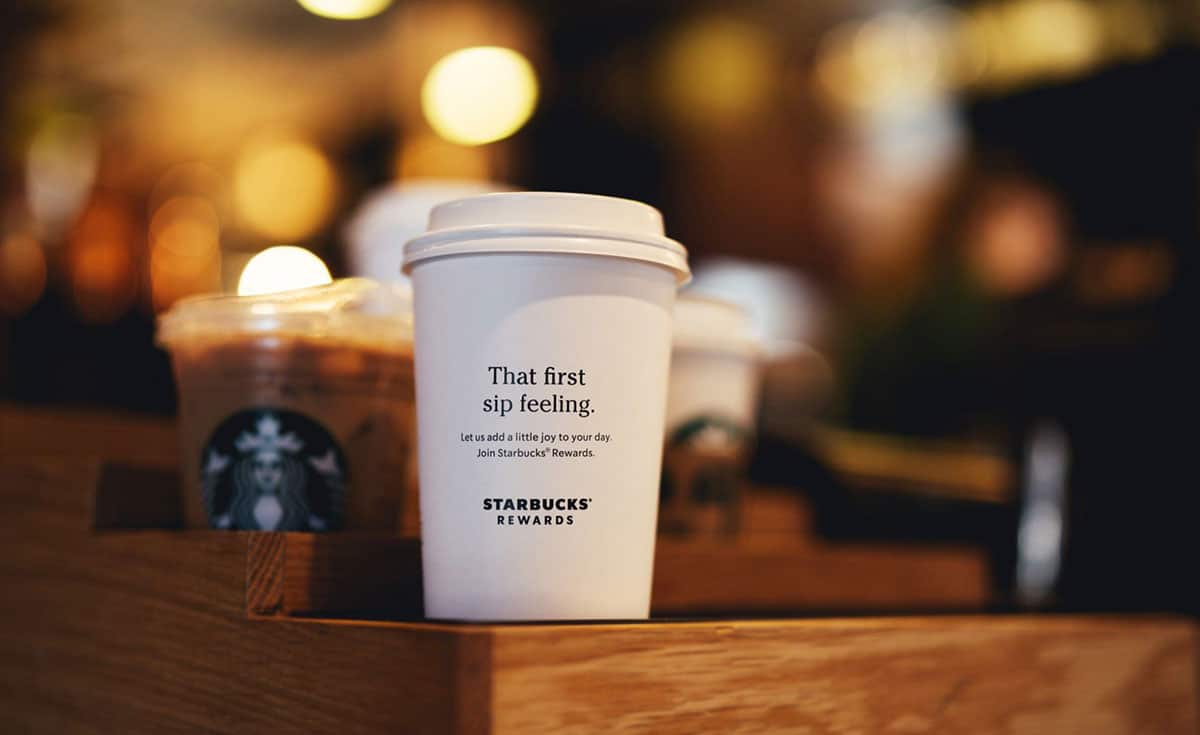Full disclosure: I’m a card-carrying Starbucks Rewards member.
Starbucks made headlines yesterday with the announcement of a completely revamped rewards program that will go live on April 16. The fact that Starbucks is making this kind of substantive change to an already successful program says a lot about their forward-thinkingness and their drive to get the customer right. It’s also a case study in well-executed loyalty program communications and structure.
What did the old program look like?
Right now, Starbucks Rewards operates as a two-tiered system based on spend. For every $1 spent, members earn two Stars. Earn between 0-299 Stars in a year and you’re a Green level member. From 300 Stars and up, you’re a Gold level member and can earn a free reward for every 125 Stars. It’s a linear approach but it’s one that has clearly been working well. Note: Membership has increased more than 25% over the past two years, climbing to 16 million active members as of December 2018, a 14% increase over the prior year.
What’s new?
No member levels, for one thing. Instead, Starbucks has opted for a flatter strategy that allows for earlier and easier redemption for low-level purchasers and still accommodates loyalists’ tastes and redemption preferences. Specifically:
- All Starbucks Rewards members earn Stars toward free Rewards from the day they join, bringing immediate value to customers. This change means members can earn enough Stars to redeem a Reward in as few as 2-3 visits.
- More (and new) Choices
- 25 Stars: Extra Espresso Shot, Dairy Substitute or Additional Flavor
- 50 Stars: Brewed Hot Coffee, Hot Tea or select Bakery Items
- 150 Stars: Handcrafted Drink, Hot Breakfast or Yogurt Parfaits
- 200 Stars: Lunch Sandwich, Protein Box or Salad
- 400 Stars: Select Merchandise or Packaged Coffee
- No Star expiration for Chase Credit/Debit Cardholders and Stars earned by Starbucks Rewards Visa Credit and Prepaid members will no longer expire. Non-cardholders’ Stars expire after about 6 months.

What does that mean to the customer?
Instead of waiting to get to 125 Stars to cash in a reward, members can redeem smaller amounts of Stars for less pricey buys—25 Stars gets you an extra espresso shot or dairy substitute, for example, while 50 Stars can be used toward brewed hot coffee, hot tea, or select bakery items.
What does that mean to Starbucks?
By making it easier and quicker for customers to redeem, Starbucks is betting on the power of instant gratification to speed up and strengthen program engagement, which in turn, should lead to stronger long-term engagement. It also means that there is no more “elite” status tier to contend with. With the new program, high earners are given a wider range of redemption options.
Anecdotally …
Starbucks Rewards transactions accounted for 40% of tender in U.S. company-operated stores over the past two years. And, according to eMarketer, 23.4 million consumers ages 14 and up used the Starbucks app to make an in-store purchase at least once every six months in 2018—which means it had more users than Apple Pay, Google Pay, and Samsung Pay.
Your thoughts?
As loyalty marketing professionals, how are you processing this? We’ll spring for a $10 Starbucks Gift Card for the most thought-provoking comment.
Mike Giambattista is Editor in Chief at The Wise Marketer and is a Certified Loyalty Marketing Professional (CLMP).
Read "What Tim Hortons Can Learn from Starbucks about Customer Loyalty" if you enjoyed this article!


